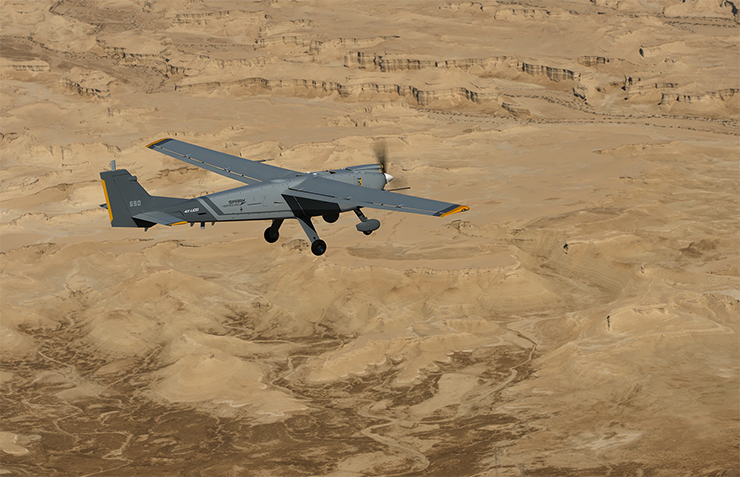Elbit Systems has rolled out the Hermes 650 Spark, the latest addition to its Hermes family of Uncrewed Aerial Systems (UAS). The company has reported that this new model in the Hermes UAS portfolio delivers an advanced design with enhanced performance features and greater payload flexibility. The Hermes 650 Spark is designed to be the contemporary successor to the long-serving Hermes 450, aiming to modernize UAS fleets that currently consist of mixed 450/900 models or are exclusively equipped with the 450 variants.
A Long Legacy
In the 1990s, the Hermes 450 set a precedent in the tactical UAS domain with its slender body, pusher propeller, V-tail, and underwing hardpoints. The early 2000s saw the larger Hermes 900 Medium Altitude Long Endurance (MALE) build on this foundation, tailoring it for broader mission profiles by accommodating multiple payloads, thanks to its enlarged body, additional underwing hardpoints, and expanded payload bay. A decade later, the Starliner evolved these concepts further and became the first MALE UAS certified for unsegregated operation in civilian-controlled airspace.
The Spark represents a significant leap forward from the tactical Hermes 450 by adopting a mission-optimized aerodynamic design and featuring an aviation-certified forward engine, enhancing performance and spatial efficiency to support extended missions up to 24 hours. The newly designed configuration increases payload capacity by integrating versatile payload bays and multiple mounting points. Its mission performance is characterized by an extended range, heightened flight speed, increased endurance, and improved operational efficiency, enabling it to transport payloads up to 120 kg without impacting its extended flight duration.
With a maximum take-off weight of 650 kg, the Spark can transport a 260 kg payload to altitudes of 22,000 ft, maintaining operations at distances of 300 km within line of sight or farther when utilizing its integrated satellite communications uplink. The aircraft is powered by a potent 100-hp aviation-certified engine coupled with a variable-pitch, three-blade tractor propeller tailored for peak efficiency. The UAS can cruise at 120 knots towards the mission zone and sustain a 55-knot loitering speed above the target area, operating the engine at low RPM to maximize efficiency and endurance. Should more power be necessary, the robust engine can contend with up to 80 knots of headwinds.
Designed for autonomous operations, the Spark includes autonomous ground taxi capabilities and automated take-off and landing abilities, even in crosswinds of up to 25 knots. It requires only a 200m take-off strip and an 800m landing runway. Post-landing, the ground team can ready the UAS for its next mission within an hour, thanks to predictive maintenance and automated pre-flight protocols. Such efficiency leads to a lower Life Cycle Cost (LCC). The Spark can carry multiple advanced payloads, such as high-definition electro-optics (EO) for intelligence, persistent surveillance, reconnaissance missions, radar, and SIGINT systems, and is compatible with payloads currently used by the Hermes 450 and 900.
Future Plans
Development and flight testing of the Hermes 650 Spark is in progress, with the first deliveries forecasted for the following year. Upon deployment, it is expected to progressively replace Hermes 450 units in operational use for over three decades. Similarly to its predecessors, the Spark is designed to integrate seamlessly into mixed fleets alongside the Hermes 900 MALE UAS and the Starliner, ensuring high operational safety, resilience, and adaptability across various weather conditions to meet various mission demands. This integration is supported using standardized payloads, control systems, and ground support equipment.
In response to the necessity for UAS operation in civilian airspace, the Hermes 650 Spark has been developed from the ground up to meet NATO STANAG 4671 regulations, which stipulate the criteria for certifiable UAS. This strategy was initially realized with the company’s Starliner, developed from the Hermes 900, which achieved the distinction of being the first MALE UAS to be granted such certification in 2022.











